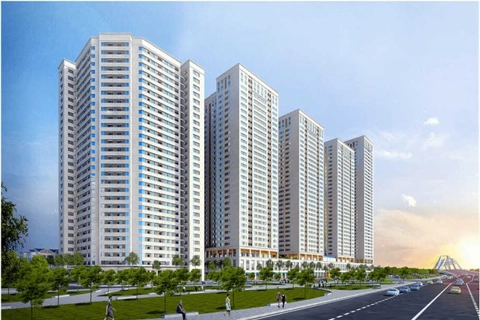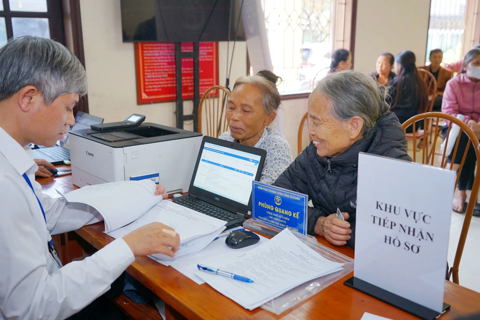Property
Many foreign investors eye industrial property in Vietnam: JLL
Jul 24, 2018 / 11:15 AM
Vietnam can be a new industrial powerhouse in Southeast Asia and this will open up huge opportunities for industrial property developers, according to JLL Vietnam.
A quite large number of overseas investors have active plans to invest more in industrial real estate in Vietnam to capitalize on rising foreign direct investment in the Southeast Asian country, said a Jones Lang Lasalle (JLL) executive.
Although Vietnam’s industrial property has seen robust growth, it’s still in the nascent stage of development, Bui Nguyen Huyen Trang, head of markets at JLL Vietnam, told Hanoitimes.
Developers in Vietnam normally resell or lease land at industrial zones or offer simple ready-built warehouse/factories that can meet basic needs only, while this model has been much ahead in other country, Trang noted.
“This is the great potential that foreign [industrial property] investors look for and they tend to find local partners for investment. We can totally expect large deals such as Warburg Pincus’, she said, referring to the US private equity fund’s investment to set up a US$200-million joint venture with Vietnam’s Becamex IDC early this year.
Trang pointed out that one of the largest difficulties that investors encounters is the huge land fund for development that can span dozens and hundreds of hectares and much time is needed for site clearance.
In addition, the shortage of labor force, especially in northern Vietnam where many hi-tech companies are based, and a time-consuming investment approval process can dishearten foreign companies to establish their factories in industrial zones. Therefore, industrial property developers should provide assistance to their potential clients, Trang said.
Vietnam can be Southeast Asia’s new industrial powerhouse
Vietnam can be a new industrial powerhouse in Southeast Asia and this will open up huge opportunities for industrial property developers, a report by JLL Vietnam has showed.
Vietnam has a series of characteristics that provide confident to a raft of large foreign investors from around the globe to set up operations in the country.
Firstly, Vietnam possesses a young, plentiful, low cost workforce. “This is one of the foremost factors that global manufacturers ponder investment in Vietnam as low labor cost can make their products competitive.”
Secondly, being one of the countries with the longest coastlines, Vietnam’s “extremely favorable strategic” location makes its central to seaborne routes.
Thirdly, Vietnam’s appeal also comes from its deepened integration into the global economy through numerous free trade agreements (FTAs). Vietnam’s trade deal with South Korea has encouraged Samsung to invest US$17 billion in Vietnam so far.
Fourthly, as China shifts to manufacturing based on higher technology and workforce costs have risen there, manufacturers operating in China now tend to relocate their factories to countries with lower costs. “Given its close proximity, Vietnam has become the top choice for this migration,” Trang said.
“Those four factors have made Vietnam’s industrial property hotter than ever and the segment will further thrive,” Trang stressed, adding Vietnam’s export-driven economy and deepened integration give a big boost to industrial real estate.
“Vietnam is establishing itself as the industrial powerhouse within Southeast Asia and as we have witnessed in other countries around the region, we expect the industrial market will enter a new phase and move up the value chain in the future, moving away from labor intensive to capital intensive,” Stephen Wyatt, country head of JLL Vietnam, commented in a press release.
Vietnam has established itself as one of the brightest manufacturing hotspots within South East Asia over the past 20 years. In 1986, there was 335 hectares of land dedicated to industrial parks and the figure has reached 80,000 hectares now, according to JLL.
In the first half this year, foreign direct investment (FDI) commitments in Vietnam rose 5.7% year-on-year to US$20.33 billion, with a focus on manufacturing and real estate. Actual FDI in the period reached US$8.37 billion, up 8.4% over the same period last year.
Although Vietnam’s industrial property has seen robust growth, it’s still in the nascent stage of development, Bui Nguyen Huyen Trang, head of markets at JLL Vietnam, told Hanoitimes.

Bui Nguyen Huyen Trang, head of Markets at JLL Vietnam. Photo: Tuan Minh
|
“This is the great potential that foreign [industrial property] investors look for and they tend to find local partners for investment. We can totally expect large deals such as Warburg Pincus’, she said, referring to the US private equity fund’s investment to set up a US$200-million joint venture with Vietnam’s Becamex IDC early this year.
Trang pointed out that one of the largest difficulties that investors encounters is the huge land fund for development that can span dozens and hundreds of hectares and much time is needed for site clearance.
In addition, the shortage of labor force, especially in northern Vietnam where many hi-tech companies are based, and a time-consuming investment approval process can dishearten foreign companies to establish their factories in industrial zones. Therefore, industrial property developers should provide assistance to their potential clients, Trang said.
Vietnam can be Southeast Asia’s new industrial powerhouse
Vietnam can be a new industrial powerhouse in Southeast Asia and this will open up huge opportunities for industrial property developers, a report by JLL Vietnam has showed.
Vietnam has a series of characteristics that provide confident to a raft of large foreign investors from around the globe to set up operations in the country.
Firstly, Vietnam possesses a young, plentiful, low cost workforce. “This is one of the foremost factors that global manufacturers ponder investment in Vietnam as low labor cost can make their products competitive.”
Secondly, being one of the countries with the longest coastlines, Vietnam’s “extremely favorable strategic” location makes its central to seaborne routes.
Thirdly, Vietnam’s appeal also comes from its deepened integration into the global economy through numerous free trade agreements (FTAs). Vietnam’s trade deal with South Korea has encouraged Samsung to invest US$17 billion in Vietnam so far.
Fourthly, as China shifts to manufacturing based on higher technology and workforce costs have risen there, manufacturers operating in China now tend to relocate their factories to countries with lower costs. “Given its close proximity, Vietnam has become the top choice for this migration,” Trang said.
“Those four factors have made Vietnam’s industrial property hotter than ever and the segment will further thrive,” Trang stressed, adding Vietnam’s export-driven economy and deepened integration give a big boost to industrial real estate.
“Vietnam is establishing itself as the industrial powerhouse within Southeast Asia and as we have witnessed in other countries around the region, we expect the industrial market will enter a new phase and move up the value chain in the future, moving away from labor intensive to capital intensive,” Stephen Wyatt, country head of JLL Vietnam, commented in a press release.
Vietnam has established itself as one of the brightest manufacturing hotspots within South East Asia over the past 20 years. In 1986, there was 335 hectares of land dedicated to industrial parks and the figure has reached 80,000 hectares now, according to JLL.
In the first half this year, foreign direct investment (FDI) commitments in Vietnam rose 5.7% year-on-year to US$20.33 billion, with a focus on manufacturing and real estate. Actual FDI in the period reached US$8.37 billion, up 8.4% over the same period last year.








